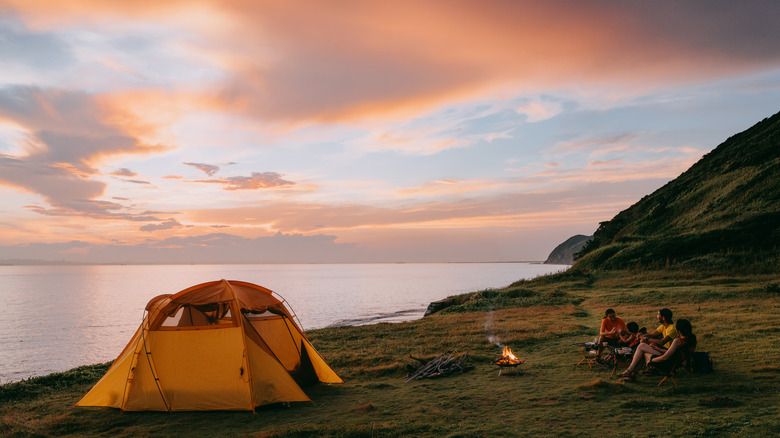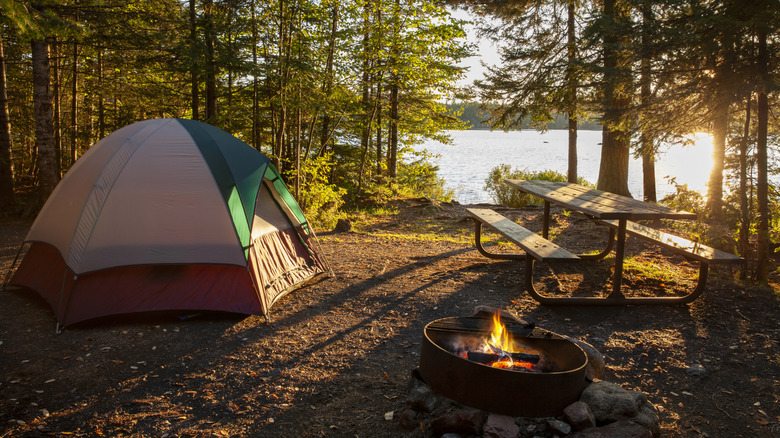Ignoring This Fundamental Camping Consideration Is Unsafe For You And The Environment
We may receive a commission on purchases made from links.
Let's be honest — it can be tempting to veer off the beaten path. Maybe you find a quiet spot in the woods with great views, no one around, and space to pitch a tent or park your rig. What's the harm in settling in for the night? Actually, quite a bit. Camping outside of designated sites can be unsafe for both you and the environment.
For starters, there's safety. Established campsites are typically chosen because they're farther from dangers like falling branches, flood-prone areas, unstable ground, or known wildlife corridors. Sticking to established sites can make tent camping a lot less intimidating, too — you don't want to learn the hard way that your perfect-looking spot turns into a flood zone when it rains (or that it's a favorite hangout for bears).
Then there's the environment to consider. Wandering off-trail to set up camp can harm fragile ecosystems. Vegetation crushed under your tent or vehicle can take years or even decades to recover. Wildlife may also be disturbed by your presence, or worse, attracted to food you're not properly storing. In fact, for these same reasons, you should think twice about hiking off-trail. This is why Leave No Trace principles encourage campers and hikers to stick to places already worn-in rather than damaging untouched terrain. Just because a spot looks empty doesn't mean it's appropriate for camping.
How to camp responsibly and more sustainably
Sticking to established campsites doesn't mean sacrificing solitude or adventure. With a little planning, you can enjoy wild spaces while keeping yourself and the land protected. If you're boondocking or dispersed camping, start by checking maps from agencies like the Bureau of Land Management (BLM) or National Forest Service. These often show previously used or designated sites that are still nice and remote. Look for cleared, level spaces with signs of past use like packed soil, old campfire rings, or vehicle pullouts.
There are some other crucial rules to follow to avoid ruining your camping getaway. First, stay on durable surfaces and plan to leave the site the same or better than how you found it. Avoid creating new fire pits or trampling over vegetation, even if it looks flat and open. Limit campfires to areas where they're allowed and safe. Better yet, use a camp stove, like this Gas One portable stove. In areas prone to wildfires, always check for fire bans first, and never leave without making sure the fire is completely out.
The U.S. Forest Service also recommends camping at least 200 feet away from water sources. It's smart to be mindful of what you might introduce into water sources, as well. For example, bug sprays, sunscreens, soaps, etc. can often harm ecosystems. Use a portable toilet (like this Sckee camping toilet) or bury your waste at least 6 to 8 inches deep and away from water, trails, and campsites. And, as always, pack out all your trash, including food scraps. At the end of the day, the goal is to keep nature wild and beautiful for the next person who comes along.

